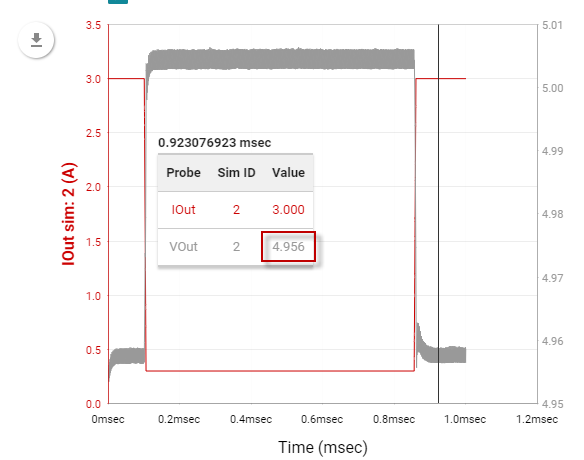Tool/software: WEBENCH® Design Tools
Hi , When simulating LMZ12003, using default values for feedback resistors ( Vout =5V, so RFBT=5.062Kohm, RFBB=1.07kohm ) the load transient waveform shows steady state at 4.096V instead of 5V . the resistors when using formula from the data sheet should set voltage to 5.0018V. Could you explain the difference?



